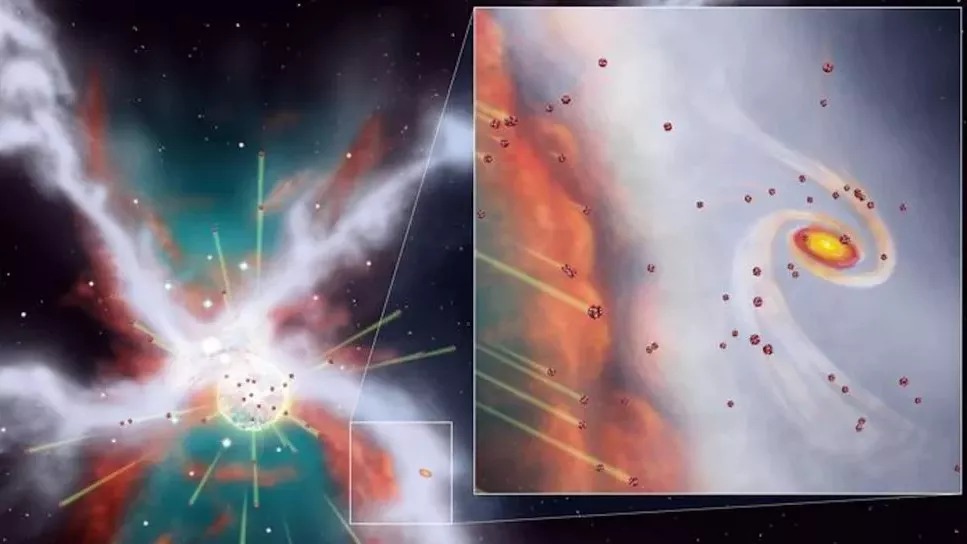
A nearby supernova, a massive explosion in space, might have wrecked our solar system. Luckily, our sun was protected by a shield of molecular gas. Scientists came to this discovery by examining isotopes, which are different forms of elements, in meteorites.
The research team found varying amounts of a radioactive form of aluminum in the meteorite samples. This told them that around 4.6 billion years ago, an extra dose of this radioactive aluminum showed up in our neighborhood in space. The most logical explanation for this event is a nearby supernova explosion.
Supernova blastwave
According to research led by Doris Arzoumanian, an astrophysicist at the National Astronomical Observatory of Japan, our early solar system likely survived a powerful explosion called a supernova blastwave. They believe that the cocoon-like environment surrounding the young solar system acted as a protective buffer against this shockwave.
Supernova explosions happen when massive stars, at the end of their lives, run out of fuel for nuclear fusion. Their cores collapse under gravity, causing a massive explosion that spreads heavy elements forged during the star’s lifetime into space.
This ejected material becomes the building blocks for new stars, but the blastwave can be strong enough to destroy any nearby developing planetary systems.
Stars are born within vast clouds of molecular gas made up of dense tendrils or filaments. Smaller stars like our sun form along these filaments, while larger stars, like the one that exploded in this supernova, tend to form at the intersections of these filaments.
Thick shield around the solar system
Arzoumanian’s team estimated that it would have taken around 300,000 years for the shockwave from the supernova to break through the dense filament that shielded our young solar system.
Meteorites that contain radioactive isotopes broke away from larger bodies like asteroids, which were formed within the first 100,000 years of our solar system’s existence, while it was still surrounded by this dense filament.
The cocoon-like structure likely protected the developing solar system from the intense radiation emitted by hot and massive stars known as OB stars. Such radiation could have negatively impacted the formation of planets like Earth.
The new findings also suggest that, in addition to acting as a shield, the filament may have captured and channeled radioactive isotopes, bringing them into the region around the young sun.
NEWS 🚨: U.S. Space Command has confirmed that fragments of an interstellar meteor have been recovered in the Pacific Ocean
This is the first time humans have come in contact with something from another Solar System 😳 pic.twitter.com/va9ZM5LifO
— Latest in space (@latestinspace) July 15, 2023
In a study published in April in the Astrophysical Journal Letters, the team stated, “This scenario may have multiple important implications in our understanding of the formation, evolution and properties of stellar systems.”
They further explained, “For example, the host filament may play an important role in shielding the young solar system from the far-ultraviolet radiation from OB stars that would photo-evaporate the protostellar disk affecting its final size, which would have a direct impact on planet formation within the disk.”
See all the latest news from Greece and the world at Greekreporter.com. Contact our newsroom to report an update or send your story, photos and videos. Follow GR on Google News and subscribe here to our daily email!



